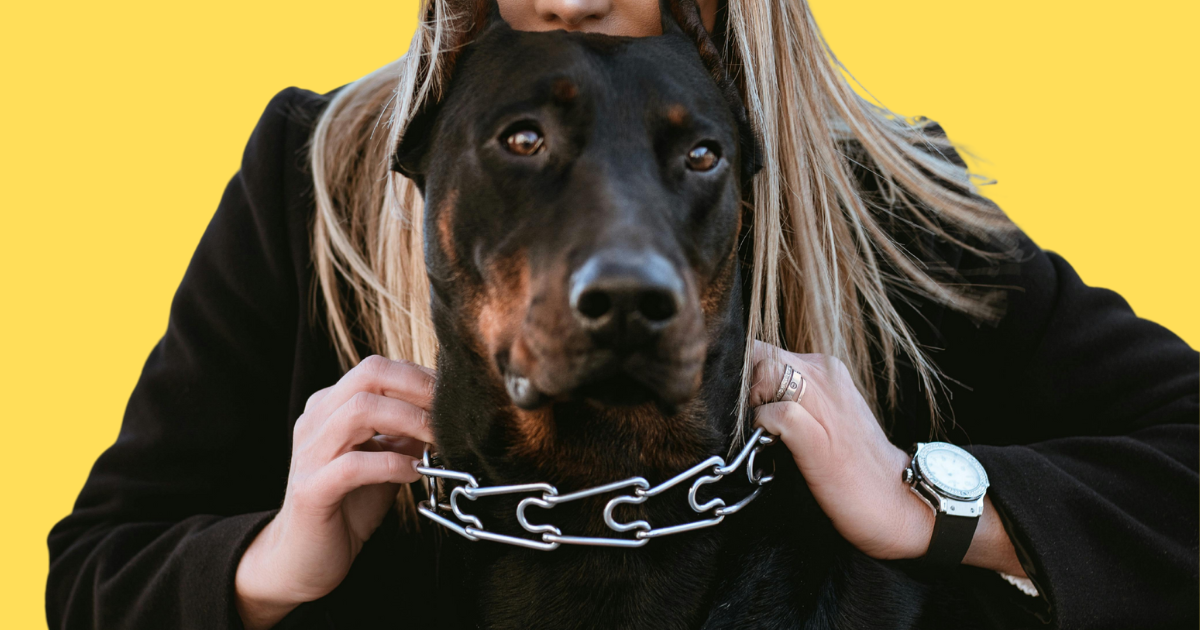How to Chain a dog can be a sensitive and controversial topic. While some dog owners use chains for safety or containment, it is essential to understand the humane and responsible ways to do so. This guide will walk you through everything you need to know about how to chain a dog safely, the best practices, and alternative options to ensure your pet’s well-being.
Why Do People on How to Chain a Dog?
Dog owners may choose to chain their dogs for several reasons, including:
- Safety: Preventing dogs from running into traffic or getting lost.
- Containment: Temporary measure when fences are unavailable.
- Behavioral Management: Preventing aggressive or destructive behavior in specific situations.
However, it is crucial to prioritize the dog’s health, comfort, and mental well-being when using a chain.
Risks Associated with Dog Chaining
Improper chaining can lead to various risks, such as:
- Physical injuries (neck wounds, sores, and entanglement)
- Behavioral issues (aggression, anxiety, depression)
- Exposure to extreme weather conditions
- Limited social interaction and exercise
Best Practices for Chaining a Dog Choose the Right Equipment:
- Use a lightweight, durable chain or cable.
- Ensure the collar is comfortable and properly fitted (avoid choke or prong collars).
- Use swivel connectors to prevent tangling.
- Set Up a Safe Environment:
- Select a shaded, weather-protected area.
- Provide a clean, insulated doghouse or shelter.
- Ensure access to fresh water and nutritious food at all times.
- Limit Tethering Time:
- Use chains only for short, supervised periods.
- Avoid long-term chaining, which can harm physical and mental health.
- Provide Regular Exercise and Socialization:
- Take your dog for daily walks and play sessions.
- Allow interaction with other dogs and family members.
- Regularly Check the Chain and Collar:
- Inspect for wear and tear.
- Adjust the fit as your dog grows.
Legal Considerations of Dog Chaining
Many U.S. states and cities have regulations regarding dog tethering. It is essential to:
- Check local laws and ordinances on dog chaining.
- Follow guidelines on chain length, duration, and shelter requirements.
- Understand the consequences of violating these laws.
Alternatives to Dog Chaining
If possible, consider more humane alternatives:
- Fenced Yards: Secure, enclosed areas allow safe outdoor time.
- Dog Runs: A cable run system offers mobility without confinement.
- Crate Training: Safe indoor containment for short periods.
- Supervised Outdoor Play: Engage in interactive outdoor activities.
Signs of Stress or Discomfort in Chained Dogs
Monitor your dog for signs of distress:
- Excessive barking or whining
- Aggression or withdrawal
- Physical injuries or sores
- Changes in eating or sleeping habits
Tips for Responsible Pet Ownership
- Regular Veterinary Care: Keep vaccinations and check-ups up to date.
- Proper Nutrition: Feed a balanced diet suitable for your dog’s breed and age.
- Mental Stimulation: Provide toys, puzzles, and enrichment activities.
- Training and Obedience: Positive reinforcement techniques help curb unwanted behavior.
How to Chain a Dog Safely and Responsibly
1. Choose the Right Chain and Collar
- A swivel stake or trolley system is better than a basic chain to avoid tangling.
- Choose a padded collar; steer clear of tight collars or choking chains. A well-fitting, cushioned collar or harness lowers injury risk.
- Select a lightweight yet robust chain such that it will hold the dog without being overly weighty.
2. Determine a Safe Place
- Dogs need cover from all kinds of severe weather, including heat, cold, or rain.
- Make sure the dog has a clean, dry surface; steer clear of chaining it in filthy, muddy, or flooded surroundings.
- Make sure none of the adjacent sharp objects, toxic plants, or dangerous animals could endanger them.
3. Guarantee Food and Water Access
- Set out a spill-proof water dish within reach.
- Give them a consistent schedule. Make sure they eat a balanced diet and stay away from leaving food out for extended lengths of time to stop contamination.
4. Avoid long-term chaining.
- Dogs shouldn’t be chained for long stretches of time or over night. Depression, tension, and violence can all result from extended chaining.
- Dogs need room to run and play. Take them for daily walks and, if at all feasible let them roam in a safe, gated area.
5. Watch Health and Behavior
- Excessive barking, pacing, or hostility can all point to worry or discomfort.
- Check the dog’s neck and body often for any indications of irritation, sores, or cuts the chain might have caused.
- Dogs require company as they are sociable animals. Often interact with your dog to avoid behavioral issues and loneliness.
6. Think Beyond Chaining
- Use a Secure Fence: An safer option than chaining is a fenced yard.
- Install a Wireless Containment System: Playpens or invisible fences let dogs roam without running across chining hazards.
- Use a dog run or kennel; a large kennel or enclosed run offers a safe space for your dog to remain free from movement restriction.
Conclusion on how to chain a dog
Understanding how to chain a dog safely and responsibly is crucial for your pet’s physical and emotional well-being. Prioritizing humane methods, adhering to legal requirements, and considering alternative containment options can create a safer and happier environment for your dog. Remember, responsible pet ownership is about providing love, care, and respect for your furry friend.
By following this guide, you can ensure that your dog remains healthy, happy, and safe.

